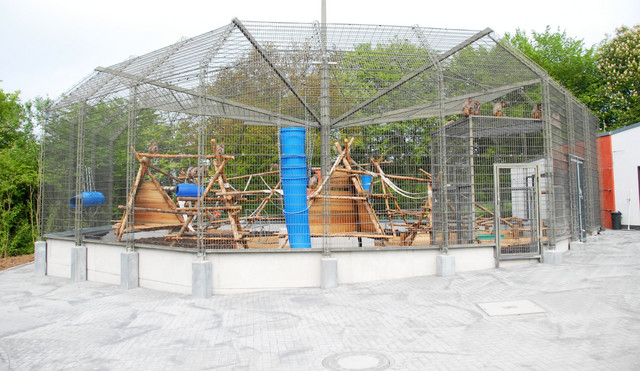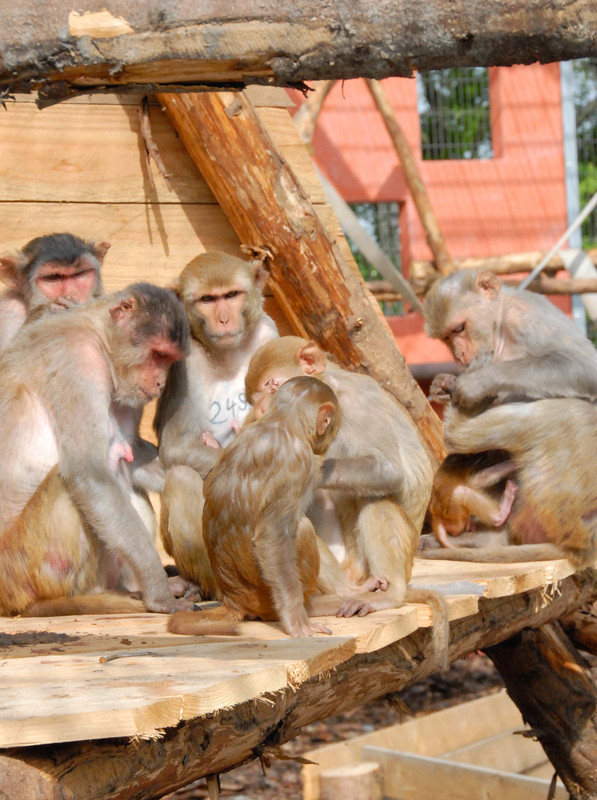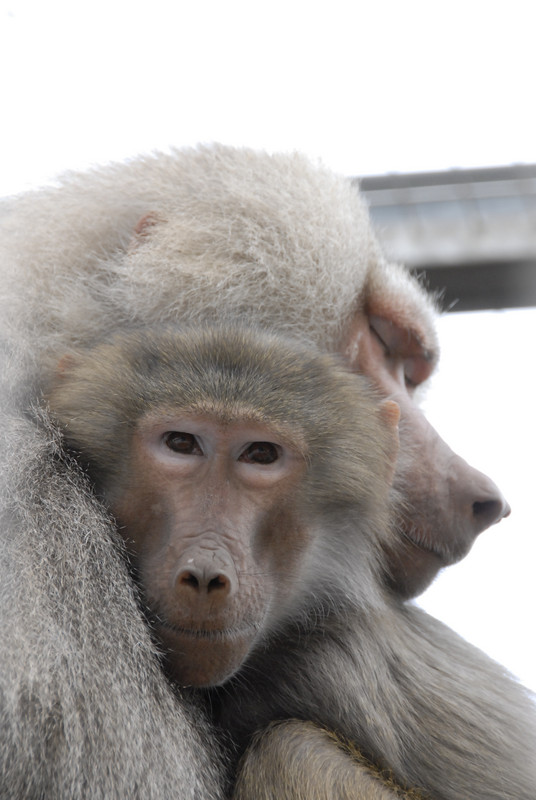Relocation and new baboon males
Even the most valiant baboon male becomes too old to lead his horde one day. At the DPZ two younger males have now replaced our former alpha hamadryas baboon Fred, who had to be pulled down due to age and illness. Charly and Carlchen come from the zoo in Osnabrück where they grew up together. "Both males are used to living in a group with other adult males. So chances are that they might continue to get along well at the DPZ and will have only minimal dominance fights," says colony manager Uwe Schönmann.
In the near future there will be an additional enclosure available for the hamadryas baboons, connected by a corridor. This will allow the males to back out to their own enclosure with their females while also staying together as a group. So far, everything is calm in the group: After a bit of excitement and some minor fighting, life is going easy now. Neither Charly nor Carlchen have tried to harm the two cubs of the group.
Prospectively, the baboon breeding at the DPZ shall be enlarged. Odds are good that this will work out well: Even the lower ranking of the both new males has already started flirting with two females.
There are also news about our rhesus macaques: After the construction works for the enclosure "octagon" were finished in February, the monkeys now moved into their new, old home. In the course of extensive construction plans the enclosure has been relocated within the area of the DPZ.
Before their movement the group had to be separated. Because their horde had become too large due to the good breeding conditions at the DPZ, the division was necessary to reduce social stress for the animals. Therefore, the original group of about 90 monkeys of four families was divided into two groups with two families each.
To make this necessary separation as comfortable as possible for the monkeys, students had monitored the social life of the group. Based on this, they developed a plan for assigning animals to the two groups, together with the experts of the primate husbandry of the DPZ. Now, 42 rhesus macaques live within the relocated octagon and have already settled in well.



